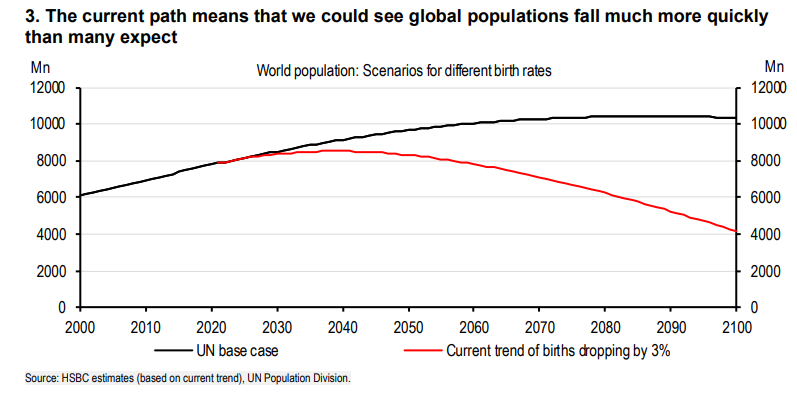Demographic Disaster Imminent?
January 27, 2024 | Expert Insights

“Of all things in the world, people are the most precious,” Mao Zedong declared soon after he took power, believing China needed more soldiers and workers. Decades later, the statement rings true. Countries like China, France, South Korea, and Japan are grappling with the effects and likely future effects of falling populations.
French President Emmanuel Macron has come under fire for his "demographic rearmament" proposal to rekindle France's fertility rates. Meanwhile, China is struggling to convince people to have more children. As states try to prevent a possibly imminent demographic disaster, their policies face controversy and questions about their efficacy.
Background
Macron announced measures to revive France's flagging population a few hours after the publication of the annual demographic report by the French National Institute for Statistics and Economic Studies (INSEE). The report indicates a 6.6% drop in births from 2022 to 2023.
The new plan features a reformed parental leave and other reforms to boost fertility rates, such as better access to fertility treatments and free fertility tests. The new parental leave will be shorter than the present one but with higher pay.
The existing parental leave was initiated in 1977 and reformed in 2014. It allows parents to take leave upon birth until the child is three years old. While this sounds good, the low remuneration makes it not feasible: only 14% of women and 1% of men avail of it. Moreover, the number of beneficiaries has fallen by half over the last ten years. Those who do make use of it often turn to it as a last resort.
Meanwhile, China is reaping the consequences of its harsh one-child policy, which quelled the birthrate over many decades. Chinese authorities continued the tight restrictions long after demographers warned them to ease the rule. Now, Beijing is struggling to undo its baby bust. Last year's birthrate was the lowest since 1949.

Analysis
While the pandemic witnessed significant drops in birthrates in many places, China’s is part of a long-term trend. By 2050, around one-third of Beijing’s population is projected to be older than 60. A 2019 report by the Chinese Academy of Social Sciences found the state pension fund was likely to be completely depleted by 2035. This ageing demographic may be a significant handicap in China’s efforts to become a world-leading economy.
Rather than just exhorting young people to embrace marriage and family life, the Chinese government will have to devise concrete incentives to change the trend of women increasingly reluctant to tie the knot. This could include maternity benefits for mothers and working mothers. Beijing seems to be veering towards a more hard-line approach, such as discouraging abortions for non-medical reasons. It is increasingly harder for a woman to get a divorce in court, even if domestic abuse is in the picture. These factors are adding to women’s trepidation and resistance towards marriage and children.
In France, Macron's demographic rearmament has been criticized as a part of a shift rightward as he sets the course for his new government, which has a substantially right-leaning composition. While Macron's political motivations cannot be dismissed, the demographic challenge cannot be denied. 2023 reported the lowest population since World War II. The fertility rate has fallen to 1.68 per woman of childbearing age, while the renewal threshold is 2.1.
An ageing and falling population pose a significant problem for France's social security, which depends on working people's taxes to fund retirees' pensions. Less working people and more retirees will significantly burden the social security system.
It remains to be seen whether Macron’s new parental leave is sufficiently remunerative to encourage parents to avail it. Many have reacted to these “natalist” (pro-birth) policies as a right-leaning infringement on women’s autonomy. Better access to fertility tests and fertility treatment are in no way coercing women to have children. However, the rest of the “rearmament” measures are yet to be unveiled.
Assessment
- As France and China struggle to encourage their people to embrace parenting, they will have to find tangible measures to make it more feasible.
- At the same time, they will have to prepare for the possible future of a demographic winter and gear policies towards cushioning and preparing for its effects on key areas such as social security funding, the economy, and military development.
- Countries like India, which have a substantial youth bulge right now, will have to plan their future population trajectories, keeping the lessons of China and France in mind.








Comments